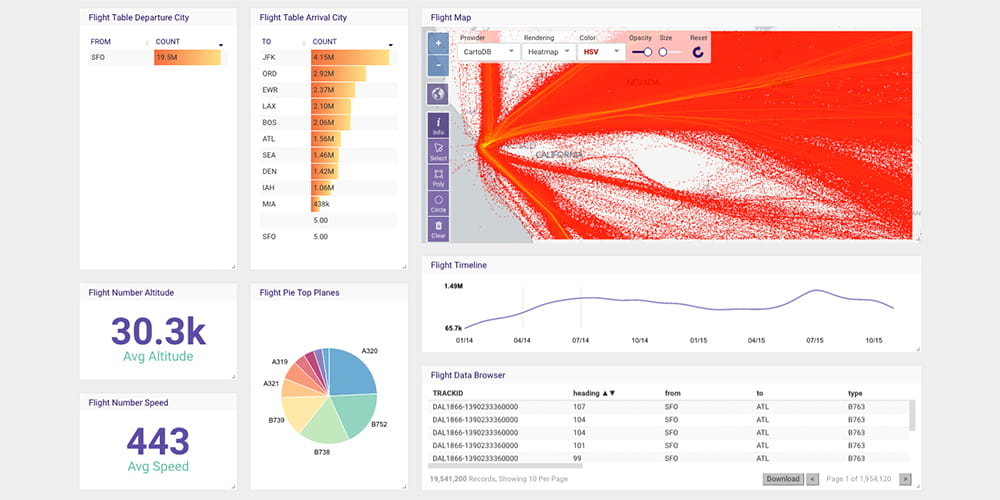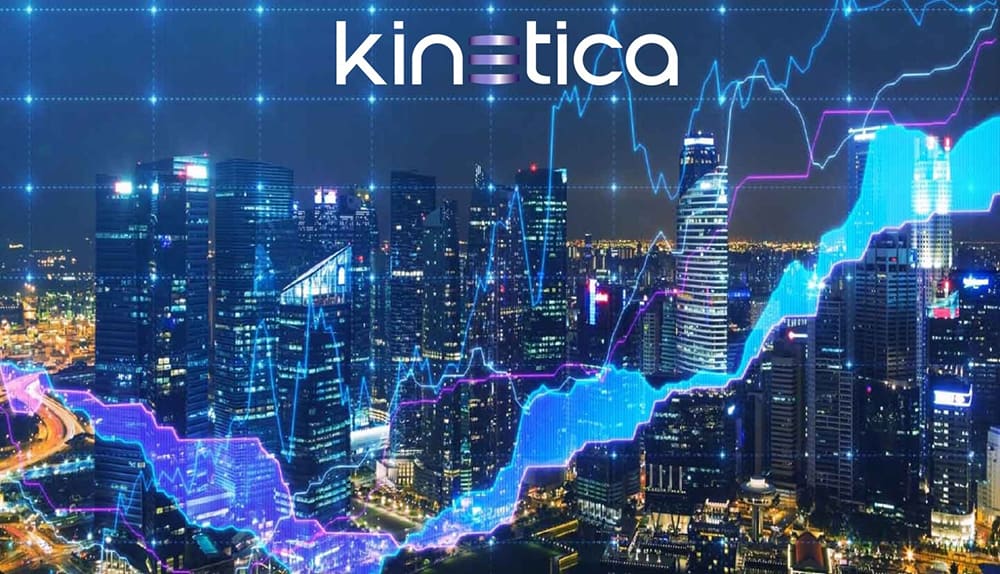Kinetica’s newest product release delivers new geospatial capabilities and enterprise-grade features for better performance and user experience, as well as improved efficiency and utilization to drive real-time, location-based analytics and analytic processing. It also offers a more simplified deployment in the cloud for faster time-to-value. Public cloud offers tremendous agility, flexibility, elasticity, and ease of use for enterprises looking to quickly get started with compute-intensive data and analytics. To find out more about their products we sat down with Dipti Borkar, VP of Product Marketing at Kinetica:

Q: Why are GPUs now more commonly recognized as a breakthrough technology?
A: The graphics processing unit (GPU) is seen as a far more cost-effective way to address the compute performance bottleneck today. GPUs are capable of processing data up to 100 times faster than configurations containing CPUs alone. The reason for such a dramatic improvement is their massively parallel processing capabilities, with some GPUs containing nearly 6,000 cores—upwards of 200 times more than the 16 to 32 cores found in today’s most powerful CPUs. For example, the Tesla V100—powered by the latest NVIDIA Volta GPU architecture, and equipped with 5,120 NVIDIA CUDA cores and 640 NVIDIA Tensor cores—offers the performance of up to 100 CPUs in a single GPU.
 Recommended: Pienso Raises $2.1M Seed Funding To Help Non-Programmers Interact With The Machine Learning Algorithms Directly
Recommended: Pienso Raises $2.1M Seed Funding To Help Non-Programmers Interact With The Machine Learning Algorithms Directly
Q: Kinetica has been using GPUs to accelerate your high performance database for a while now. What are some of the benefits you’re seeing?
A: The benefit from the performance boost afforded by GPU acceleration is different for different applications. In general, the more processing-intensive the application, the greater the benefit. One of the more advanced use cases is for in-database Machine Learning (ML) and Deep Learning (DL). ML/DL models crunch massive datasets and automatically uncover the patterns, anomalies, and relationships needed to make more impactful, data-driven decisions. But deploying ML within the enterprise presents some challenges. To help overcome these and achieve the full promise of ML, you can use database technologies that leverage the power of GPUs, in-memory data management and distributed computing, and also integrate open source ML frameworks such as TensorFlow to deliver simpler, converged, and more turnkey solutions.
Internet of Things (IoT) applications where millions of devices are generating data every second that needs to be analyzed in real-time is another ideal use case to leverage GPUs. Because many “Things” generate both time- and location-dependent data, the Kinetica’s geospatial functionality that is GPU-accelerated enables support for even the most demanding IoT applications.
Q: We’re hearing a lot about interactive location-based intelligence. What is this and how can GPUs provide value?
A: Just as most organizations now have a need to process at least some data in real time, they also have a growing desire to integrate location into data analytics applications. Given its roots in graphics processing, it should come as no surprise that the GPU is especially well-suited to processing geospatial algorithms on large datasets in real time. With Kinetica, the actual generation and rendering of the map-based graphics is done within the database allowing applications to almost instantly display location based searches on ordinary browsers. The GPU-accelerated database also makes it possible to ingest, analyze, and render results on a single platform, thereby eliminating the need to move data among different layers or technologies to get the desired results.
Q: With so much value available from GPUs and products like in-memory databases that leverage them, it’s no surprise Kinetica closed one of the largest Series A financing rounds this year. Tell us about it.
A: In June, Kinetica closed a $50-million Series A financing co-led by Canvas Ventures and Meritech Capital Partners, with participation from new investor Citi Ventures and existing investor Ray Lane of GreatPoint Ventures. Kinetica is no ordinary Series A. Today, we are on our 6th product release with customers such as the United States Postal Service and major Fortune 500 brand names, including Caesars Entertainment, GlaxoSmithKline, PG&E, US Postal Service, and one of the world’s largest retailers. We estimate our total addressable market to be approximately $30 billion using Gartner’s 2017 Q1 forecast for enterprise software.
 Recommended: FusionLayer Provides The Layer That Fuses All The Automated Processes Together On The Network Level
Recommended: FusionLayer Provides The Layer That Fuses All The Automated Processes Together On The Network Level
Q: You recently tightened your partnership with NVIDIA. Can you give us some of the details?
A: In September, Kinetica announced a new solution combining the immense power of NVIDIA DGX Station, the world’s first deskside supercomputer, with Kinetica’s GPU-accelerated database to speed up Tableau queries, providing users the ability to make faster data-driven decisions. It’s available immediately from NVIDIA and Kinetica business partner InterWorks, allowing customers of Tableau to modernize their underlying databases to take full advantage of the valuable insight Tableau provides. Armed with this solution, customers can more quickly explore their largest data sets, with minimal constraints, to immediately connect to tables, rows and columns, for fast, real-time data exploration, reporting, dashboards, and now machine learning – all in one data platform. As a result, business analysts can make faster decisions by visualizing and interacting with billions of data elements instantly.
Q: How would a company get started with a GPU-based database solution?
A: Open APIs make it easy to incorporate GPU-based solutions into virtually any existing data architecture, where they can integrate with both open source and commercial data analytics frameworks. You can leverage the power of GPUs for analyzing data bring large potential gains without the pain normally associated with the techniques traditionally used. As with anything new, of course, it is best to research your options and choose a solution that can meet all of your analytical needs, scale as you require, and, most important, be purpose-built to take full advantage of the GPU. So start with a trial version or pilot project to gain familiarity with the technology, because you will not be able to fully appreciate the raw power and potential of a GPU-accelerated database until you experience it for yourself.
Activate Social Media:


